| Kinase Assay: |
| Food Chem Toxicol. 2014 Jul;69:55-62. | | Vicenin 2 isolated from Artemisia capillaris exhibited potent anti-glycation properties.[Pubmed: 24713265 ] | Vicenin -2, isolated from a traditionally used medicinal plant Artemisia capillaris, is a 6,8-di-C-glucoside of apigenin which has been previously reported to possess a wide variety of pharmacological activities including antioxidant, anti-inflammatory, anti-cancer, and hepatoprotective. However, there have not been any reports concerning its anti-diabetic potential until now.
METHODS AND RESULTS:
Therefore, in the present study, we evaluated the anti-diabetic potential of Vicenin -2 via α-glucosidase, protein tyrosine phosphatase 1B (PTP1B), rat lens aldose reductase (RLAR), and advanced glycation end products (AGE) formation inhibitory assays. Vicenin -2 strongly inhibited α-glucosidase, PTP1B, and RLAR in the corresponding assays. In addition, Vicenin -2 inhibited the formation of both fluorescent AGE and nonfluorescent AGE, e.g., CML, as well as the level of fructosamine in glucose-fructose-induced bovine serum albumin (BSA) glycation. In the test system, Vicenin -2 suppressed glycation-induced protein oxidation by attenuating the formation of protein carbonyl groups as well as by inhibiting the modification of protein thiol groups. Moreover, Vicenin -2 was found to be a potent inhibitor of glycation-induced formation of amyloid cross-β structures in BSA.
CONCLUSIONS:
Taken together, Vicenin -2 might be a useful lead for the development of multiple target-oriented therapeutic modalities for the treatment of diabetes and diabetes-associated complications. | | Biochem Pharmacol. 2011 Nov 1;82(9):1100-9. | | Anti-cancer effects of novel flavonoid vicenin-2 as a single agent and in synergistic combination with docetaxel in prostate cancer.[Pubmed: 21803027] | The present study was conducted to determine the efficacy of novel flavonoid Vicenin -2 (VCN-2), an active constituent of the medicinal herb Ocimum Sanctum Linn or Tulsi, as a single agent and in combination with docetaxel (DTL) in carcinoma of prostate (CaP).
METHODS AND RESULTS:
Vicenin-2 effectively induced anti-proliferative, anti-angiogenic and pro-apoptotic effect in CaP cells (PC-3, DU-145 and LNCaP) irrespective of their androgen responsiveness or p53 status. Vicenin -2 inhibited EGFR/Akt/mTOR/p70S6K pathway along with decreasing c-Myc, cyclin D1, cyclin B1, CDK4, PCNA and hTERT in vitro. Vicenin -2 reached a level of 2.6±0.3μmol/l in serum after oral administration in mice which reflected that vicenin-2 is orally absorbed. The i.v. administration of docetaxel (DTL), current drug of choice in androgen-independent CaP, is associated with dose-limiting toxicities like febrile neutropenia which has lead to characterization of alternate routes of administration and potential combinatorial regimens. In this regard, Vicenin -2 in combination with DTL synergistically inhibited the growth of prostate tumors in vivo with a greater decrease in the levels of AR, pIGF1R, pAkt, PCNA, cyclin D1, Ki67, CD31, and increase in E-cadherin. Vicenin -2 has been investigated for radioprotection and anti-inflammatory properties. This is the first study on the anti-cancer effects of Vicenin -2 .
CONCLUSIONS:
In conclusion, our investigations collectively provide strong evidence that vicenin-2 is effective against CaP progression along with indicating that Vicenin -2 and DTL co-administration is more effective than either of the single agents in androgen-independent prostate cancer. |
|


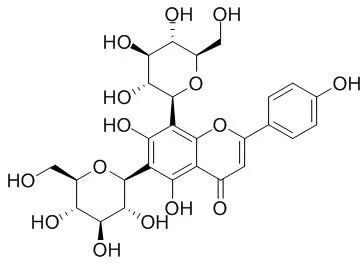

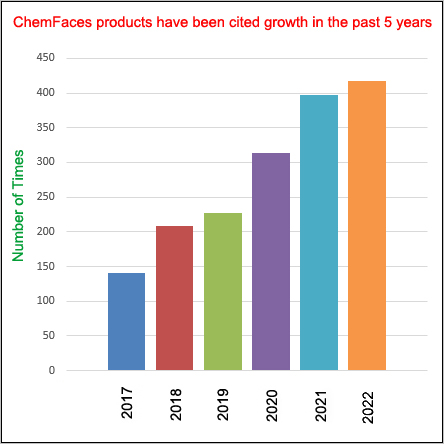
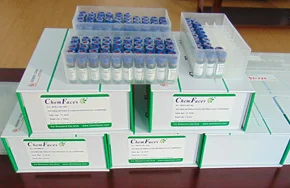
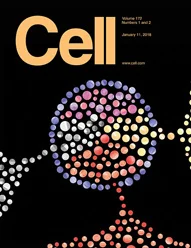 Cell. 2018 Jan 11;172(1-2):249-261.e12. doi: 10.1016/j.cell.2017.12.019.IF=36.216(2019)
Cell. 2018 Jan 11;172(1-2):249-261.e12. doi: 10.1016/j.cell.2017.12.019.IF=36.216(2019)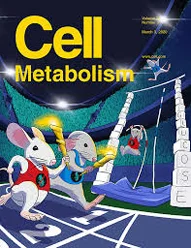 Cell Metab. 2020 Mar 3;31(3):534-548.e5. doi: 10.1016/j.cmet.2020.01.002.IF=22.415(2019)
Cell Metab. 2020 Mar 3;31(3):534-548.e5. doi: 10.1016/j.cmet.2020.01.002.IF=22.415(2019)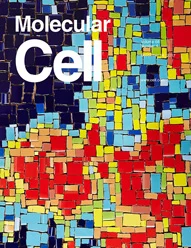 Mol Cell. 2017 Nov 16;68(4):673-685.e6. doi: 10.1016/j.molcel.2017.10.022.IF=14.548(2019)
Mol Cell. 2017 Nov 16;68(4):673-685.e6. doi: 10.1016/j.molcel.2017.10.022.IF=14.548(2019)